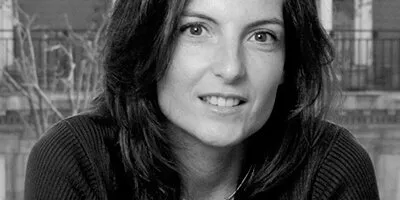
Freight: be it land or sea, all agree on green
Experts
Christophe Lemaire
Digital manager for Rail Logistics Europe
Alex Caizergues
CEO of Syroco
Mette Sanne Hansen
Head of the Maritime department at DTU
(Danish technical university)
Under pressure from decarbonisation objectives, maritime and rail freight are increasingly playing a leading role in the future of clean transport. By focusing on the switch to clean fuels but above all on data optimisation and intelligent exploitation of flow constraints.
In November 2017, the launch of its project was publicised by a communications campaign worthy of the blessing ceremonies of ocean liners from the golden age of transatlantic cruises. Three years later, in September 2020, the Jacques Saade, name of the founder of the Marseille company CMA-CGM, left the Shanghai shipyards, ready for launch. With the Jacques Saade and with the announcement of the construction of eight other ships of the same type by the company, the Marseille shipowner has achieved the transformation of switching to cleaner fuels such as liquefied natural gas (LNG), the combustion of which reduces CO2 emissions by 25%.2
A gradual transition
With 90% of global freight transport being by sea, according to the French Institute of International Relations (Ifri), continued maritime fossil fuel use has become incompatible with the imperative of tackling climate change. While this transport sector already corresponds to 3% of greenhouse gas emissions in the world, as much as air transport, its impact might be multiplied by six by 2050, reaching 17% of emissions, according to the International Maritime Organization (IMO). Given this fact, combined with the 2015 Paris Climate Agreement, in 2018 the IMO set itself a target of reducing this share of greenhouse gas emissions by 50% by 2050. And each tonne of fuel saved translates into millions of euros in savings for shipowners over time. One of the leaders in maritime freight therefore had to set an example that others could follow.
As summarised by Mette Sanne Hansen, researcher at the head of the maritime centre at the Technical University of Denmark, “companies in the sector are increasingly engaged in the search for solutions for carbon-free transport. In Denmark, we have partnered with businesses, universities and what we call here research and technology institutes, to prepare for the future.” For the Danish academic, this approach is based both on a desire to move forward and on opportunities available: “Shipowners know that there is no point in dragging their feet or not being at the forefront of new technologies. I think they don’t have a choice either, and usefully, it’s also a very good opportunity for their business.” Initiated in 2011, the transition of maritime freight to clean fuels is still ongoing. According to data from the AFI (Alternative Fuel Insights) platform, the threshold of 1,000 merchant ships equipped with LNG engines was crossed in March 2024.
A figure which may seem modest in view of the number of cargo ships, tankers and container ships circulating on the oceans, but which must also take into account the average lifespan of ships, which is around 40 years. In short: the desire to switch to alternative fuels does not mean scuttling the traditional fleet before it has had its day. In addition, it should be noted that a proportion of these conversions falls under refitting: reconfiguring the diesel fuel propulsion system of older boats.
Shipowners know that being at the forefront of new technologies is an opportunity for them.
Wind-powered transport is on the rise
This is especially the case since other technologies are also on the table, including the return of wind-powered transport: the oldest form of maritime propulsion. Over the past decade, projects to install sails on the decks of commercial ships have made a comeback. The Swedish shipping company Wallenius Marine announced in 2021 that it would adopt Ocean bird technology in the construction of its future ships. This consists of five masts of a height of 40 metres each, equipped with sails capable of rotating 360 degrees which it is claimed can result in nearly 90% fuel savings. This ambitious project could be debuting as early as 2026. In France, none other than Michelin recently launched into innovative sail design through its subsidiary Wisamo. After testing an inflatable sail on navigator Michel Desjoyaux’s boat, the tyre manufacturer hopes to equip a merchant marine vessel within a few years.
At the same time, the marketing director of Wisamo, Sandrine Porcheret announced in 20231 “the installation of a similar wing on the MN Pelican, a ro-ro chartered by Brittany Ferries to rotate between Bilbao and England.”
France is also one of the most advanced players in wind-powered transport. The sector is currently establishing a specialised hub in the Nantes region to host numerous start-ups dedicated to wind-based propulsion.
Among them is Syroco, founded by Alex Caizergues, three-time kitesurfing world champion. Since his sporting retirement, the Marseilles native and his associates have been wanting to “support the de-carbonisation of maritime transport which strongly impacts an environment — the sea — which has given us so much and which we still find exciting.” The former champion believes in the development of hybrid propulsion where sail-power can serve as a backup.
“In the majority of cases, this cannot be the source of propulsive energy. For the moment it remains niche but it works and allows savings of 5 to 10% (or even more if the wind-power system is integrated into the design of the vessel).” While the price of a modern rig remains off-putting, at several million euros, carriers could quickly find a solution that fits their needs. “Given that fuel oil represents the main item of expenditure, even a minor saving is profitable taken over several years.” Especially since, according to Alex Caizergues, shipping companies’ customers are increasingly demanding on the means used to transport their products. “Pressure from clients is having an impact on the ecological guarantees provided. It is also a question of survival.” Rather than a major revolution or a miracle solution, the entrepreneur considers that sail transport will only be one component of the transition to carbon-free maritime transport. “It’s a combination: we need synthetic fuels, e-methanol, ammonia or even green hydrogen, a little sail propulsion and above all more intelligent ships.” It is by taking into account this complementarity that Syroco has designed routing and optimisation software for merchant ships over a hundred metres in length. Thanks to artificial intelligence and machine learning the programme offers routes that consume less energy. “It is an interface for navigation personnel which compiles and aggregates natural data such as wind, waves and currents. Sailing directly into waves means 40% more energy is used,” summarises Alex Caizergues. Around thirty ships have already been equipped with the software.
The electric future of road freight
The main technological advance in the decarbonisation of road freight, the source of 26% of greenhouse gas emissions, consists of replacing the fleet of diesel-powered trucks with a fleet equipped with electric motors.
As Clément Molizon summarises, general delegate of Avere-France (National Association for the Development of Electric Mobility), “it is on road freight that all the issues are concentrated and it is not a simple task. However, the replacement technology is ready and has proven itself; the changeover took place two years ago. There is a complete range of tractors — between 19 and 26 tonnes — produced across the entire sector”, continues Clément Molizon.
All manufacturers now offer trucks with electric propulsion even if for the moment it is mainly the large companies in the haulage sector which are purchasing them and testing their degree of autonomy. Last year, 552 electric registrations were recorded in France, particularly for intercity freight. For long distances, manufacturers hope to achieve 500 km of autonomy by 2025 and thus cover 90% of needs.
Such an objective needs to be accompanied by the installation of charging stations, either in depots or in service areas for long journeys. The electric revolution in heavy goods vehicles also evokes the question of electric battery production. To date, six of the world’s top ten manufacturers are Chinese.
Europe is determined to guarantee its sovereignty with the launch of about forty giga factories including four in France.
Key transport figures
Turnover of the transport and logistics sector worldwide
200 | 10% | 1.4 |
Breakdown by mode of transport
Sources: Ministry of Ecological Transition and Territorial Cohesion and Eurostat
Automating certain processes to optimise rail-related activities is the topic of the moment.
Growing ecological constraints
Sea freight has seen its volume quadruple since the beginning of the 1990s. This is the sector which has benefited the most from the globalisation of trade and its dynamics: the emergence of South-East Asia as a “workshop of the world”, the strong demographic rise in developing countries, the urbanisation of populations and the increase in their consumption rates... Trends which are not expected to be reversed before 2080 amid a possible future global demographic decline. But this context of growth is now marked by increasing ecological constraints such as the depletion of fossil fuel reserves and the objective of reducing greenhouse gases. The ambitions are now clear and quantified, whether at the end of COP 28 in Dubai or in the portfolio of incentive measures decided with the European Green Deal2. Furthermore, beyond the question of the energy sources used, efforts must also focus on optimising traffic and saving on movement, ultimately moving towards more intelligent and less expensive transportation. It is also one of the major challenges needing to be met by rail freight.
Optimised rail freight
Exempt from energy constraints up to now, thanks to a French fleet that is 90% electrified, 77% for Europe overall, the eco-transition for rail is being thought of in terms of optimising resources through the “digital” or “intelligent” train.
This is not about the widespread use of autonomous, driver-less trains, but rather the use and sharing of information in real time. Thus, IoT (Internet of Things) sensors are increasingly being used to monitor the status of trains, railways and related infrastructure in real time. Data analysis helps detect potential failures and plan maintenance. The goal is to reduce unplanned downtime, improve safety and anticipate related operations. As part of its “Smart Train” project, Mercitalia, the freight subsidiary of Italian rail transport, has just announced the equipping of 180 additional wagons with diagnostic sensors. These sensors, which incorporate the latest communications technologies, are designed to collect a multitude of data during use, facilitating real-time monitoring of train parameters, helping enable predictive maintenance. This system will automate various operational processes and optimise rail-related activities, thereby improving overall performance. “It’s the topic of the moment,” summarises Christophe Lemaire, digital manager for the Rail Logistics Europe group, which has aggregated all SNCF freight and rail logistics activities since 2020. “With GPS installed in trains, we can do many things: detect that the wagon is moving, check that it is where it should be according to its schedule. If we see that it is stationary in Marseilles when it should be approaching Dijon, what do we do with this information which is potentially important for the client? If the client has this information, they will eventually be able to reorganise themselves in response, taking account of the change in circumstances.” Knowledge of flows in real time is all the more crucial as rail freight is a complex exercise on a European scale. Freight trains are largely made up of what we call single wagons. Also called a “subdivision train”, this system makes it possible to group goods from different customers and from different origins and bring them together on the same train until the next yard where the wagons will be disassembled and reassembled to form other trains. “On a long European journey, there can be four, five, ten successive sorting operations. However, as with a passenger train, if you miss the first connection, then everything becomes complicated. Hence the need to have as much information as possible to be able to adapt if needed.”
Another requirement: sharing information between partners. With a sector that has been open to competition since 2006, European freight operators are trying to gain market share while simultaneously working together. “If we have a train that has to go from Perpignan to Hamburg, there is a good chance that DB Cargo, the freight subsidiary of Deutsche Bahn, will take care of the transport once the German border is crossed. It is a competitor but also a subcontractor who also needs reliable information to be able to share it in turn. We must collaborate and share as much data as possible,” continues Christophe Lemaire.
Wind-powered transport is particularly relevant for non-perishable goods such as coffee or cocoa.
A need for massive investments
The European Green Deal has set the target of 30% rail freight for goods transport by 2030. In France, it has stagnated for several years at around 10%, well behind countries like Austria, Switzerland and Sweden. The objective therefore seems ambitious, especially since the French network is saturated according to Christophe Lemaire: “With everyone going on vacation, the lines are packed during the day and then at night the tracks are unusable because of maintenance works.” A major asset to the decarbonisation of transport, the sector today needs massive investment. “If we want to develop the Lyon bypass, it’s an investment of 10 billion,” takes Christophe Lemaire as an example.
These are colossal needs which will also have to take on the modal shift from road to rail with the establishment of heavy freight rail routes requiring either the support for heavy goods trailers on long distance trains (over 600 kilometres) or for crossing sea or mountain ranges. France and Italy, for example, have launched a joint consultation for the establishment of an Alpine freight rail route in 2025. To encourage this option, the national rail freight development strategy provides for a 15% incentive for shippers who commit to a modal shift via energy saving certificates. While the system is not recent — it dates from 2007 — the French government decided to extend it to freight rail routes in November 2022, in order to compensate for the difference in costs between rail and road.
Slowly does it
While costs remain the critical factor, the question of time also arises. In a sector where delivery times are at the heart of the problem, some have decided to do things “slower to do better”. The Skipper Group company, based in Drôme, presents itself as the inventor of slow logistics, a concept which places humans at the heart of the delivery chain. Originating from the Covid crisis and its consequences, the philosophy mixes cutting-edge technology and simple ideas. For example, delivery shuttles are equipped with a double floor which makes it possible to load twice as many pallets and therefore produce less CO2. Skipper Group also offers a “last mile” travelled by cargo bike or maritime barge. In their mission statement, the leaders remain well aware that slow freight cannot meet all needs, such as the delivery of urgent products such as medicines. Such a vision echoes that of Alex Caizergues, convinced that the wind-powered version of slow freight can equally make a contribution to eco-logistics. “Some coffee routes are already operated by mixed propulsion with a part of it being windpowered. This is certainly relevant for non-perishable goods. Beyond the simple environmental benefits, it would be quite exciting to know that the chocolate we are nibbling or the whiskey we are sipping was transported by sail.”
Look further


Illustrations
Giacomo Bagnara
Giacomo lives and works in Italy, where he seeks
inspiration in everything around him.

Text
Frédéric Cannes
Frédéric Cannes is a journalist specializing
in the field of industry and economics.
1. Les Échos, May 24, 2023.
2. The objective is for Europe to become the first carbon neutral continent by 2050. COP 28 formulates it differently by talking about a gradual exit from fossil fuels by 2050 but shares the same objective.
© Portraits: DR







